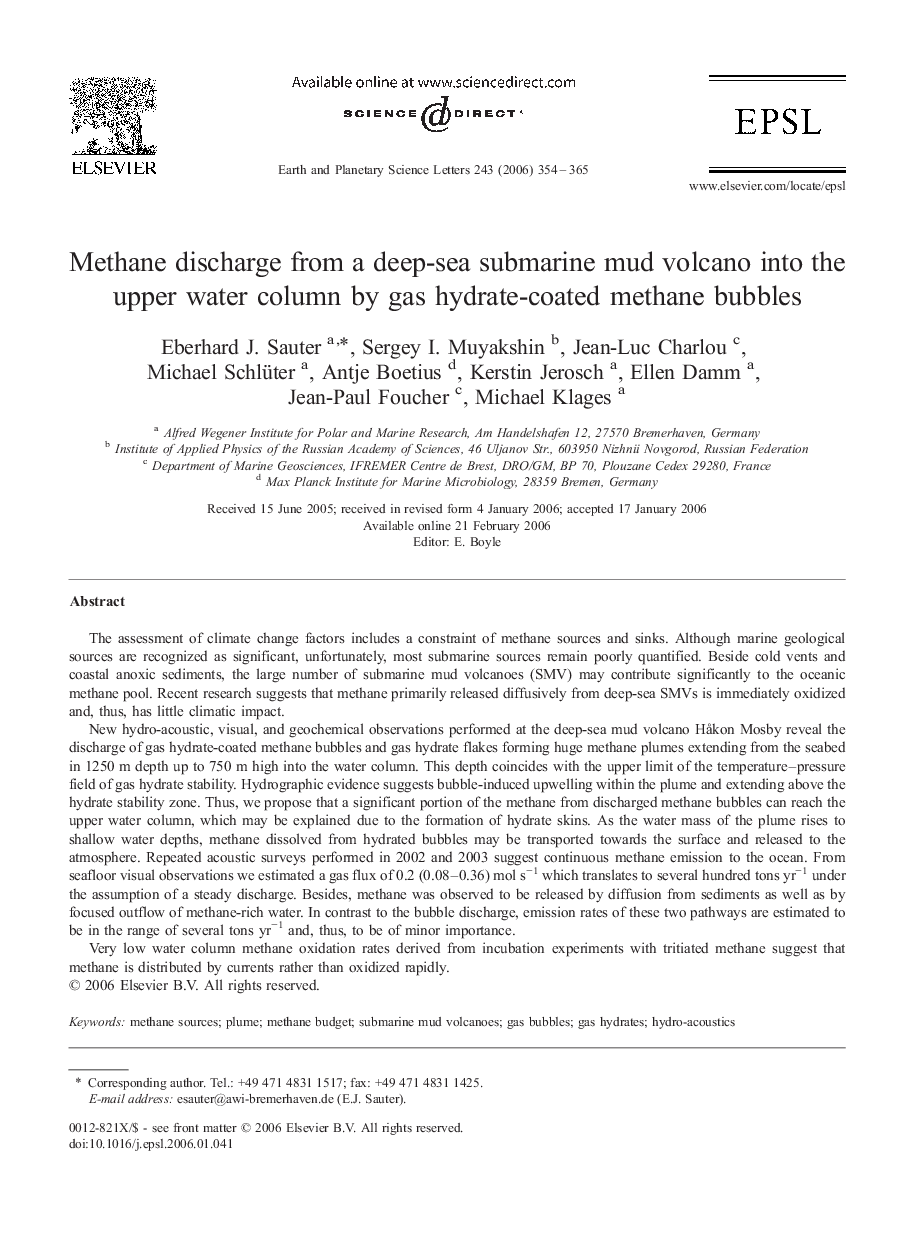| Article ID | Journal | Published Year | Pages | File Type |
|---|---|---|---|---|
| 4680887 | Earth and Planetary Science Letters | 2006 | 12 Pages |
The assessment of climate change factors includes a constraint of methane sources and sinks. Although marine geological sources are recognized as significant, unfortunately, most submarine sources remain poorly quantified. Beside cold vents and coastal anoxic sediments, the large number of submarine mud volcanoes (SMV) may contribute significantly to the oceanic methane pool. Recent research suggests that methane primarily released diffusively from deep-sea SMVs is immediately oxidized and, thus, has little climatic impact.New hydro-acoustic, visual, and geochemical observations performed at the deep-sea mud volcano Håkon Mosby reveal the discharge of gas hydrate-coated methane bubbles and gas hydrate flakes forming huge methane plumes extending from the seabed in 1250 m depth up to 750 m high into the water column. This depth coincides with the upper limit of the temperature–pressure field of gas hydrate stability. Hydrographic evidence suggests bubble-induced upwelling within the plume and extending above the hydrate stability zone. Thus, we propose that a significant portion of the methane from discharged methane bubbles can reach the upper water column, which may be explained due to the formation of hydrate skins. As the water mass of the plume rises to shallow water depths, methane dissolved from hydrated bubbles may be transported towards the surface and released to the atmosphere. Repeated acoustic surveys performed in 2002 and 2003 suggest continuous methane emission to the ocean. From seafloor visual observations we estimated a gas flux of 0.2 (0.08–0.36) mol s−1 which translates to several hundred tons yr−1 under the assumption of a steady discharge. Besides, methane was observed to be released by diffusion from sediments as well as by focused outflow of methane-rich water. In contrast to the bubble discharge, emission rates of these two pathways are estimated to be in the range of several tons yr−1 and, thus, to be of minor importance.Very low water column methane oxidation rates derived from incubation experiments with tritiated methane suggest that methane is distributed by currents rather than oxidized rapidly.
